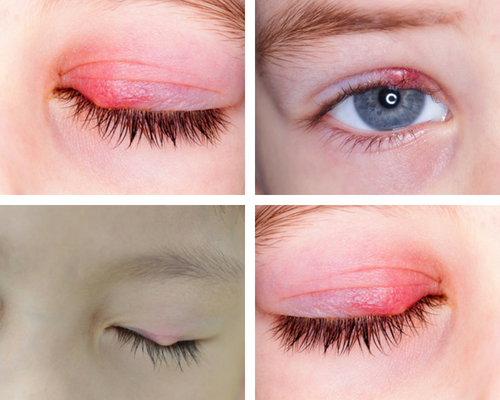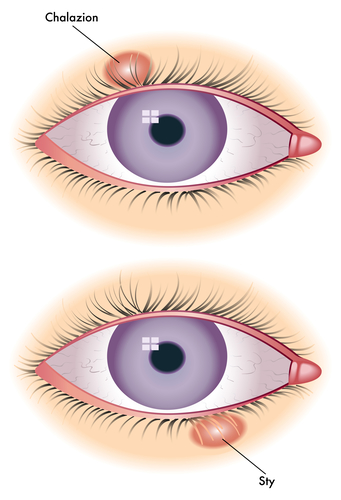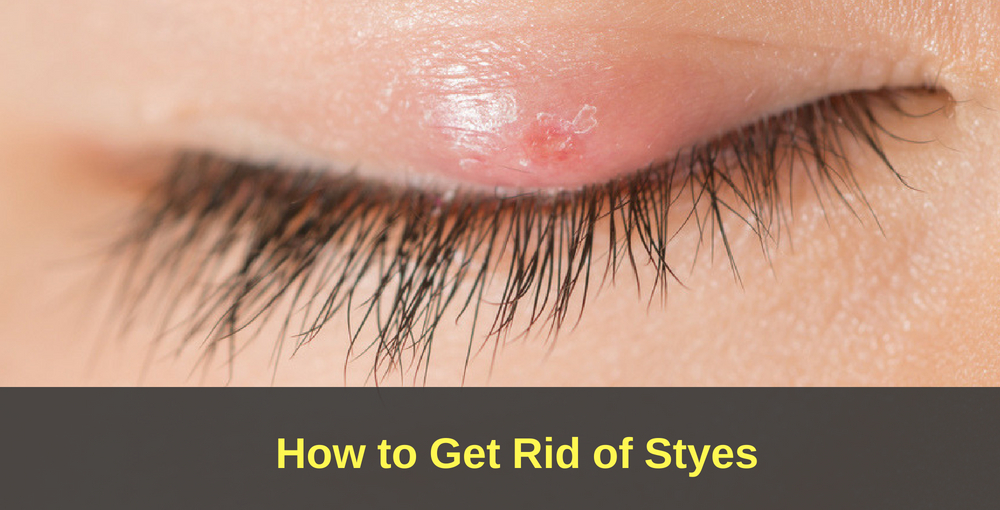838 219 20
A stye is a pimple-like bump that forms on your eyelid. They are reddish and are not fun to have. Apart from being painful, styes can make you feel uncomfortable. A stye can form under the eyelid or inside, and it is not something that is quite uncommon – you can attest to that.
Styes affect millions of people around the US, and even though not critical, they can be painful, as well as irritating. In the majority of cases, you can treat a stye at home – no big deal. But there are situations that it would be best to consult a physician – in cases where it proves stubborn and would not go away, no matter what.
Table of Contents
What Causes Styes?
Typically, there are two types of styes: external and internal. The external is when it occurs underneath an eyelash follicle, and the internal is, as you would guess, under the eyelid.
The main cause for a stye is not something you ate, or an allergy, but rather, an infection or inflammation that happens at the base of your eyelash.
Your eyelids have numerous oil glands with ducts leading into the eyelashes. Styes form when the oil ducts block and oil fails to drain. As a result, the gland swells and inflammation occurs causing the stye.
Pictures of Styes
Below are a few pictures of what a style looks likes:

The Risk factors
 Even though anyone can develop a stye, some people are more at risk than others. But what are the risk factors?
Even though anyone can develop a stye, some people are more at risk than others. But what are the risk factors?
For starters, if you have ever had a chalazion or even a stye before, then your chances of getting a stye are high in the future. Particular skin conditions such as dermatitis and rosacea are other risk factors.
Also, people with such medical conditions as high serum lipids, swelling of the eyelids and diabetes have a high probability of having a stye. And if you tend to leave make up on for long, or in an attempt to make savings you use an old makeup, then you are not safe from styes. They can strike at any time.
The Symptoms
Styes tend to develop on one eye at a time, but that does not mean it cannot affect both. Some of the early symptoms include discomfort on the eye, mild irritation, some itch, and redness.
A stye is a small red swelling that develops along the line of your eyelashes or inside the eyelid. The little bump will have a slight yellow spot at the middle. You may also feel as if some particle is in your eye.
A stye is sore to the touch, and you will feel some itch on the area.
You may also have some crustiness along the eyelids and a watery eye. Your eye may also be sensitive to light, and you may also experience some pain.
Getting Rid of Stye at Home
Most styes are easy to manage at home, and the following tips may prove useful.
Keep the Area Clean
The most basic and most straightforward measure you can use to manage styes and prevent future recurrence is hand washing. Washing hands removes possible particles that would rub against the oil ducts, causing blockages or aggravating an existing stye.
The need to thoroughly clean your hands is even more when dealing with contact lenses. Dirty hands can easily spread the bacteria to your cornea or elsewhere within the eye.
You will also need to clean the eyelids. Use a washcloth or cotton ball dipped in tear-free baby shampoo, and rinse with warm water. Remember to wash your hands after touching the affected area.
You can use ibuprofen to help with the pain.
Don’t Pop
Some people can’t resist the urge of popping the stye and draining the pus. Well, that may seem like the quickest solution, but the risk of infections involved is not worth it. Popping the pus out may easily spread the infection, worsening the already painful situation. Ideally, leave the stye to drain naturally, and it will be best for you.
Warm Compress
The most effective remedy is a warm compress, where you soak a clean, gentle cloth in warm water, and place on the swelling for about ten minutes. You dip the cloth again if it gets cool before the lapsing of the ten minutes.
Repeat on a daily basis until the stye disappears.
Warm water tends to dilate the blood vessels, enhancing circulation in the process. The chances of unblocking the blocked ducts causing the swelling are thus high. Improved circulation brings antibodies to the affected area to fight off infections.
Teabag Compress
The tea bag compress and especially green tea is also effective. The process is similar to the warm compress, but you use a blend of green tea in warm water and use it to soak the cloth. Green tea has some bacterial fighting properties, and it helps in the healing process.
Don’t attempt to hide the stye by applying makeup on it. Makeup forms a layer on the stye, further blocking the duct and slowing down the healing process. The pencils brushes you use to apply the makeup can spread the bacteria elsewhere, and you may be dealing with an aggravated situation just from using makeup.
Using Saline
Saline solution can be an effective home remedy against the stye. Specifically, it acts against the bacteria and helps drain it.
Medical Treatment
If the stye seems stubborn and does not go away after the home remedies, your doctor can recommend an antibiotic ointment to apply on the affected area. The doctor may also administer a steroid injection to ease the swelling and inflammation.
But if the stye stays put even after the medical treatment, and it continues to block vision, you can opt for surgery. Typically, the doctor injects a numbing solution before making a small incision in the area to drain the pus.
Some of the symptoms that should prompt you to seek medical attention include bleeding, a worsening stye, blocking of vision, and redness on your cheeks or elsewhere on the face.
Are Styes Contagious?
Oh yes they are! While some experts debate on this, the fact remains that styes are caused by bacteria. With this in mind, it is understandable that having this bacteria into someone else’s eyes can cause them to develop the infection. As a rule of thumb, you probably won’t want to share your facecloth or towel with someone else that has a stye.
